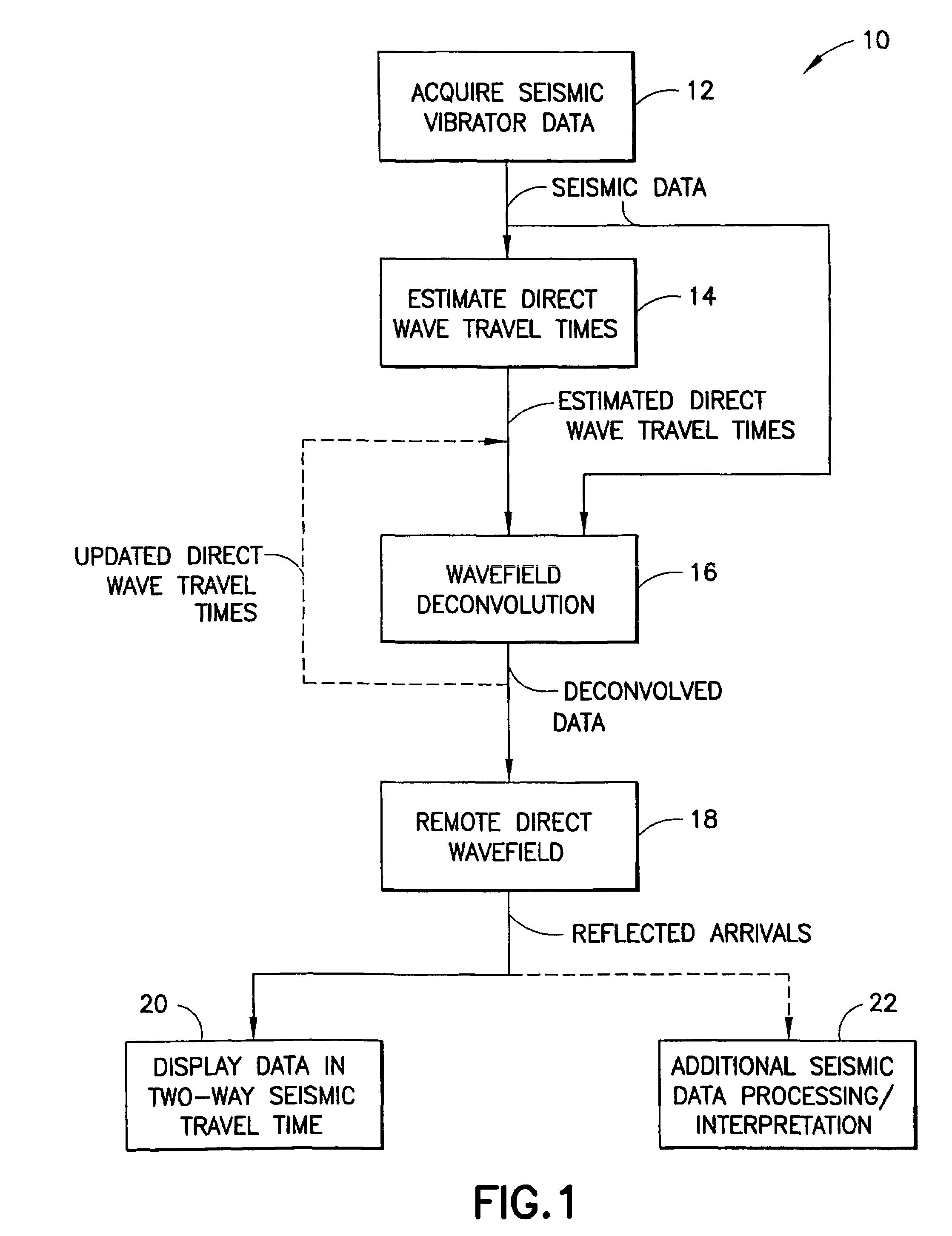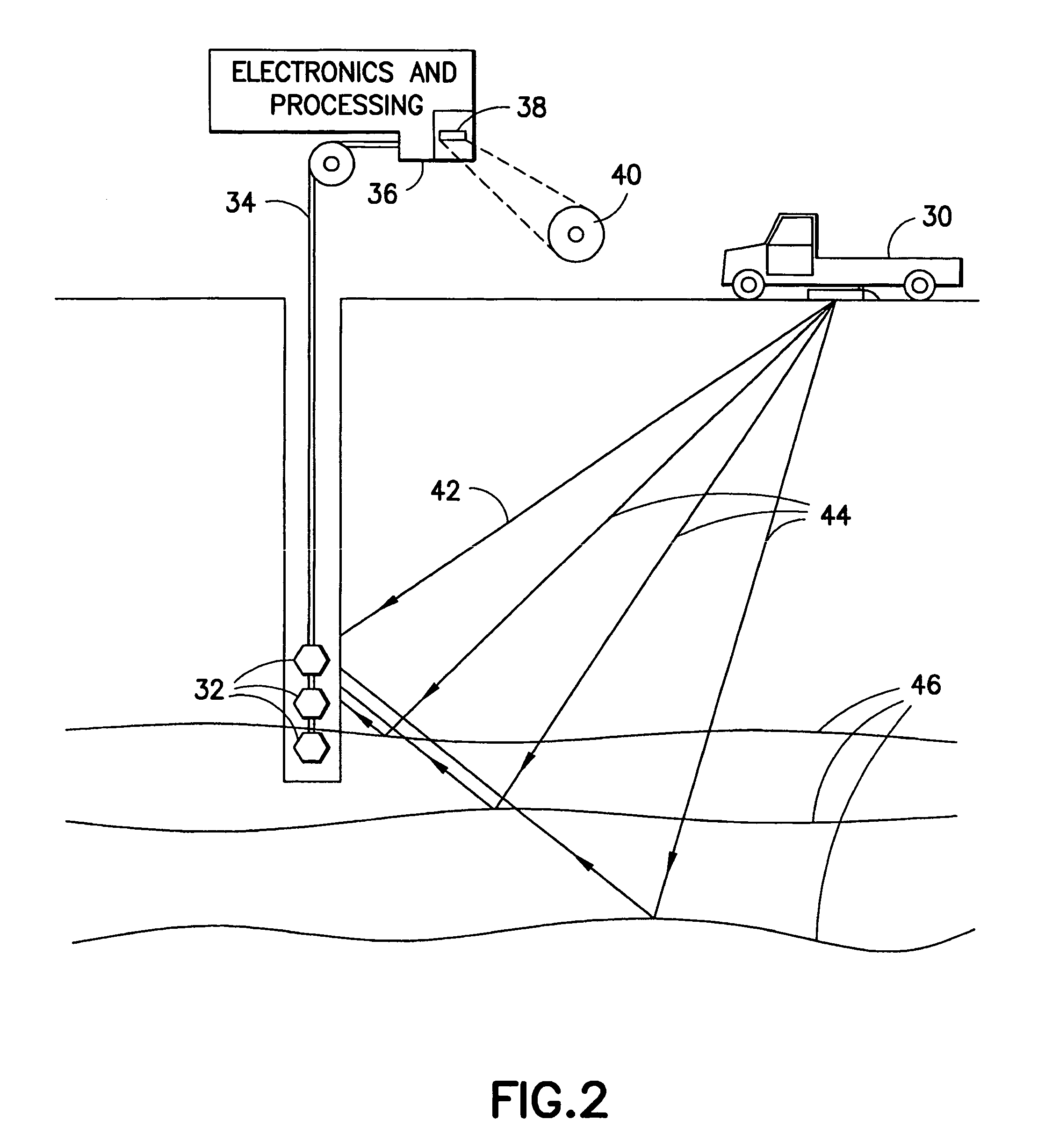High-frequency processing of seismic vibrator data
a vibrator and high-frequency technology, applied in the field of seismic data processing, can solve the problems of limited correlation data, non-linear response of the vibrator, and limited data useful bandwidth,
- Summary
- Abstract
- Description
- Claims
- Application Information
AI Technical Summary
Benefits of technology
Problems solved by technology
Method used
Image
Examples
Embodiment Construction
[0026]FIG. 1 is a flowchart that depicts various processes associated with certain embodiments of the present invention. The first process associated with Inventive Procedure 10 is the acquisition of seismic data, including both seismic obtained using a seismic vibrator and surface seismic data, the seismic data having significant harmonic energy using a seismic vibratory source at Acquire Seismic Vibrator Data 12. The direct wave arrival travel times arrivals between the seismic vibrator and an array of seismic receiver locations are then estimated at Estimate Direct Wave Travel Times 14. As discussed below, this process will typically involve correlating the seismic data with either the seismic vibrator reference sweep or an estimate of the actual seismic vibrator source signature and then picking the estimated direct wave arrival times, but other methods can be used to estimate the direct wave arrival travel times between the seismic vibrator and the array of seismic receiver loc...
PUM
 Login to View More
Login to View More Abstract
Description
Claims
Application Information
 Login to View More
Login to View More - R&D
- Intellectual Property
- Life Sciences
- Materials
- Tech Scout
- Unparalleled Data Quality
- Higher Quality Content
- 60% Fewer Hallucinations
Browse by: Latest US Patents, China's latest patents, Technical Efficacy Thesaurus, Application Domain, Technology Topic, Popular Technical Reports.
© 2025 PatSnap. All rights reserved.Legal|Privacy policy|Modern Slavery Act Transparency Statement|Sitemap|About US| Contact US: help@patsnap.com



